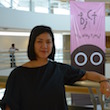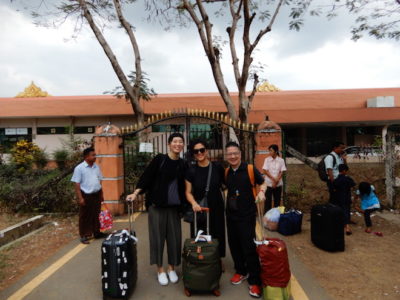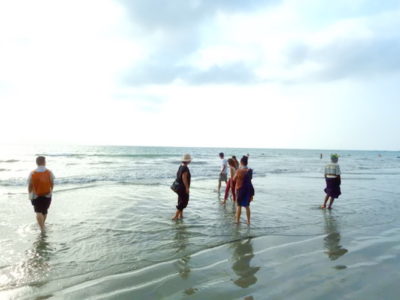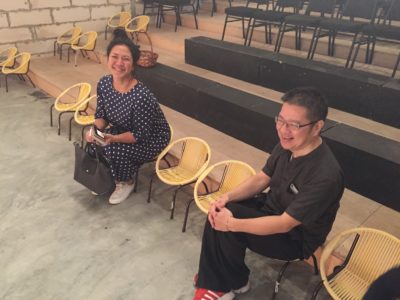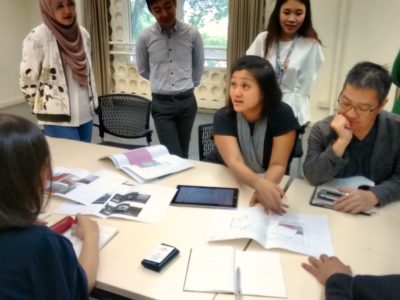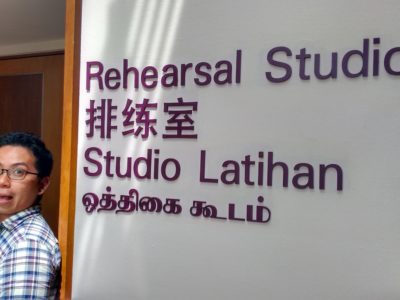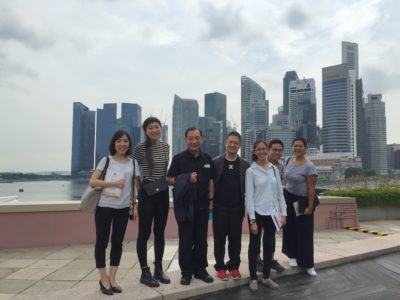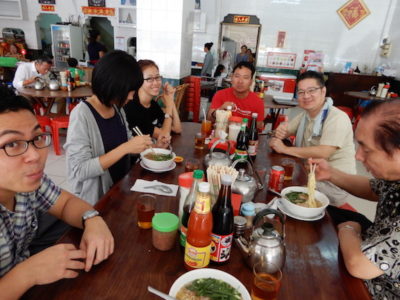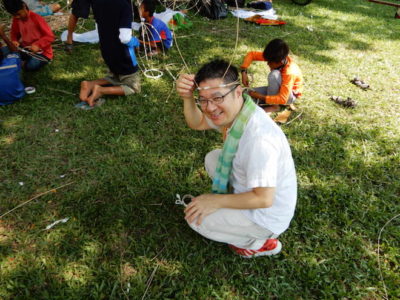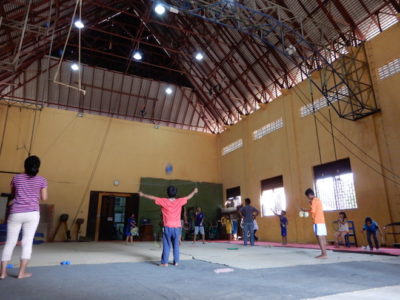Home » Research Visit Reports » Adjjima Na Patalung
I had an opportunity to join Nao Miyauchi (ricca ricca *festa, Japan) and Kung Yu (Little Door Festival, Malaysia) on a field research trip in Myanmar organised by Japan Foundation Asia Centre and ricca ricca *festa between 6-11 January. This is the last of the 3 research trips, a part of Asian Theatre for Young Audiences Network Programme, which started in 2016. Previous visits were to Singapore/Malaysia, which I was also part of, and Cambodia.
Many thanks to May Thet Zaw, Ruth Pongstaphone and Than Htut from the New Yangon Theatre Institute (NYTI), who kindly let us tag them along during their own research trip in Dawei, a southern town close to the border between Myanmar and Thailand. Dawei has in the recent years become the base for tourists before they set off to the beaches and islands along the southern coast of Myanmar. During our visits to various places as part of the schedule, and as we were walking around sightseeing in the township, I can witness signs of mordernisation, the so called new developments taking place in this quaint peaceful town, part of the effect brought forward by the post Myanmar country opening since 2011. There are a lot of new construction such as new parliament and museum built on farmers’ land and foreign factories and investments. A new road is constructed and has made it easier for foreigners to enter Myanmar from Kachanaburi Province in Thailand at Phu Nam Ron, one of the 4 border crossings in Myanmar. Such changes typically bring in positives and negatives, which will soon to follow once a country welcome capitalism. Positives could be the new infrastructure to the local business, living conveniences, and access to modern progressive medicines and technologies, etc. The negatives could be typical problems for the environments, loss of local identity and traditions, local people being pushed away from their land, etc. And with this particular issues, Dawei is one of the places in the New Myanmar that is to be watched, and therefore a place to visit for NYTI.
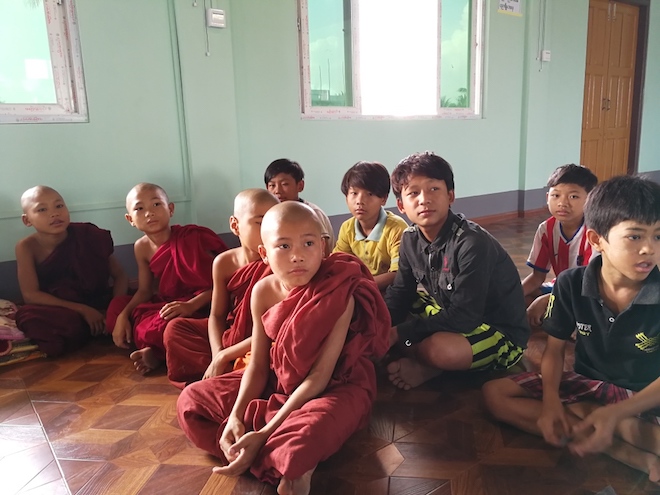
Apart from creating theatre performances, NYTI works with communities and does a lot of outreach projects. NYTI is “a grassroots, non-profit, civil society organization led by artists, educators, and students who believe that contemporary theatre can play a vital role in the development of an actively engaged, socially aware, and culturally tolerant society.”, as quoted from the company’s own website. They explained that artists in Myanmar often consider themselves as aid workers. Such work, or often called “theatre for social change” is very prominent in most countries in Southeast Asia. One of the three NYTI members we followed, Ruth, is a Thai theatre director/set designer. She has been working with the company since before the reform. Through Ruth, with an insight/outside perspective.
The Dawei visit was arranged and assisted by Wint Wah Yu, a local associate of NYTI. We followed them to several meetings with a local media called Dawei Watch, civil service organisations (CSOs) and politicians, and visited a local monastic school. We observed, listened, were in conversation, asked questions. A lot of information about Myanmar contemporary theatre and situation of the theatre for young audiences came from casual but productive conversation with NYTI members over coffee and meals.
How NYTI operates is to first make connection with the locals, and tries to understand their problem and needs. They will then explain their work and offer the possibility for collaborations through theatre. While organization such as Dawei Watch raised their concerns about the impact that the fast modernization would be to the environment and the livelihood of the region, and a CSO explained about the condition of the town prison, another explained about his developmental in a the remote village. NYTI exchanged with them ideas and explained how they could use theatre tools to explore pertinent issues, empower people, and deeply engaged with local community by allowing them ways to address their own individual and communal issues, apart from it being purely for entertainment, and that with time this might help them resolve these problems.
At the monastic school, we observed the way NYTI work with young people. In Myanmar, Monastic schools operate similarly to boarding schools or day schools, accepting orphans, children from local families who are unable to attend government schools. Monastic schools follow the government curriculum, but until recently have received very little government support, and have traditionally relied on community donations. Monastic schools rarely charge fees, and are therefore accessible to children from disadvantaged backgrounds. Facilities are generally very basic, and there is a lack of minimum standards. (MEC Baseline Report of Monastic Schools, 2014) Apart from the local children, the school we visited also hosts Christian Karen children. At the first meeting, NYTI members broke the ice by showing the children some clown acts. It seemed there was mutual interest between the school and NYTI to work together in the future.
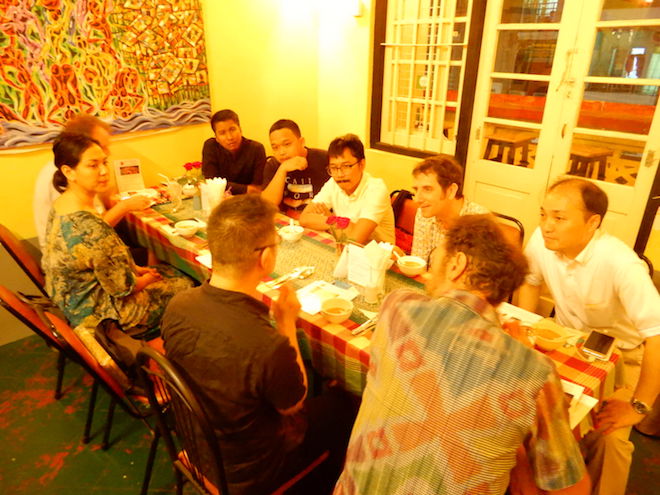
As NYTI continued their research trip in another town, we left Dawei for Yangon where we had very little time. However, thorugh NYTI, we got to meet with Yangon based artists: Thila Min and Nyan Lin Aung from Thukhuma Khayeethe; Jules Howarth, Jean- Noel Walkowiak, Julien Ariza from Social Circus Myanmar; Thant Zin Soe, a Storyteller, and also the newly posted Mr Koji Sato of Japan Foundation Yangon. We all had dinner together and got to hear more about the current situation in the contemporary theatre in Myanmar. Just before leaving Yangon, we had a meeting with Goethe Institute Yangon cultural department staffs, where their shared information about their work in education, the new 200 seat theatre in Yangon and the plan to organize an international puppetry festival.
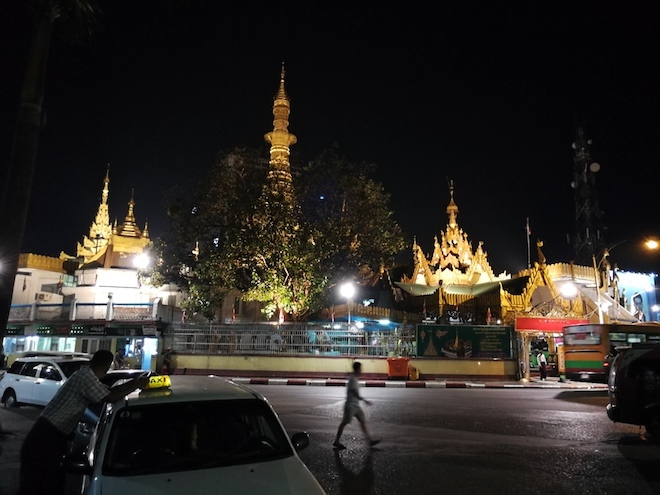
Considering that a public gathering of over 5 people was banned in Myanmar before 2011, and media is still under the control of the government, it is understandable why there are little creation of contemporary theatre in Myanmar, not to mention theatre for young audiences. TYA here like most countries in Southeast Asia are still much more active in the area of theatre in education or theatre for social change. I can see in palarell to the work of NYTI the work of Makhampom Arts Space in Thailand, and Phare in Cambodia. It is no doubt that the politics and the slow human rights and social development of a country play a huge role to the livelihood and the well being of its people, reflected by the resulting slow development of arts and culture. To repeat, NYTI members called/perceived themselves as aid workers. If we look at art as a prediction of a social condition of a place, in Southeast Asia we can sense that art still performs social function within a culture through education and social development than in artistic intervention.
